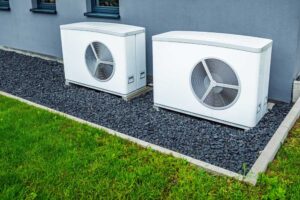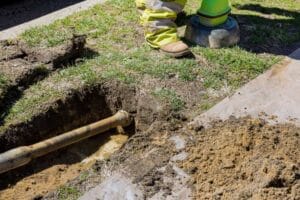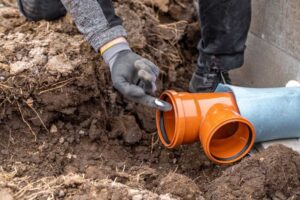
Furnace Maintenance Checklist: Ensuring Safety, Efficiency, and Comfort
A well-maintained furnace is the backbone of a comfortable home during the colder months. Regular maintenance not only extends the lifespan of your furnace but also ensures that it runs efficiently, safely, and cost-effectively. This comprehensive article provides a detailed furnace maintenance checklist, highlights the benefits of regular upkeep, and answers common questions to help you stay ahead of potential issues. Whether you are a homeowner looking to save on energy bills or someone concerned about safety hazards like carbon monoxide leaks, following this checklist will empower you to keep your furnace in top shape.
The Importance of Regular Furnace Maintenance
Regular furnace maintenance is essential for several reasons:
- Safety:
Regular inspections help detect potential hazards such as cracks in the heat exchanger, which can lead to carbon monoxide leaks—a serious health risk. - Efficiency:
A well-maintained furnace operates more efficiently, reducing energy consumption and lowering utility bills. - Longevity:
Routine maintenance extends the lifespan of your furnace by preventing premature wear and tear, saving you money on expensive repairs or early replacement. - Air Quality:
Proper maintenance, including regular filter replacement and cleaning, ensures better indoor air quality by minimizing dust, allergens, and contaminants. - Cost Savings:
Investing in maintenance now can prevent costly emergency repairs later. Scheduled check-ups and cleaning can catch minor issues before they escalate into major problems.
Key Benefits of a Furnace Maintenance Checklist
Implementing a furnace maintenance checklist offers a structured approach to upkeep. Here are some key benefits:
- Enhanced System Performance:
- Regular cleaning and inspections ensure that the furnace operates at peak efficiency.
- Early detection of minor issues prevents major system failures.
- Energy Efficiency:
- A well-tuned furnace uses less energy, contributing to lower heating bills.
- Maintenance helps in optimal combustion, reducing unnecessary fuel consumption.
- Improved Safety:
- Routine checks of the heat exchanger and combustion chamber reduce the risk of carbon monoxide leaks.
- Ensures that all safety features and controls are functioning correctly.
- Prolonged Equipment Lifespan:
- Regular servicing minimizes wear and tear, extending the overall life of the furnace.
- Protects your investment by ensuring reliable performance year after year.
- Better Air Quality:
- Clean filters and ducts contribute to a healthier indoor environment.
- Reduces the accumulation of dust, mold, and other allergens.

Detailed Furnace Maintenance Checklist
Below is a comprehensive checklist covering the essential tasks required to keep your furnace running efficiently and safely. Use this checklist as a guide for annual maintenance, or as a reference for routine self-inspection.
Maintenance Tasks Overview Table
| Maintenance Task | Frequency | Primary Benefits |
|---|---|---|
| Visual Inspection | Seasonally/Annually | Detects obvious signs of wear or damage |
| Filter Replacement | Every 1-3 months* | Maintains airflow and efficiency |
| Burner and Combustion Cleaning | Annually | Ensures optimal combustion and safety |
| Heat Exchanger Check | Annually | Prevents carbon monoxide leaks |
| Thermostat Calibration | Annually | Maintains accurate temperature control |
| Electrical and Control Checks | Annually | Ensures all system components operate safely |
| Ventilation and Exhaust Inspection | Annually | Prevents blockages and ensures proper venting |
| Lubrication of Moving Parts | Annually | Reduces friction and prolongs component life |
| Ductwork and Airflow Evaluation | Annually or As Needed | Enhances indoor air quality and efficiency |
| Safety Feature Verification | Annually | Confirms all safety devices are operational |
* Frequency for filter replacement can vary based on usage, type of furnace, and manufacturer recommendations.
Detailed Steps for Each Maintenance Task
1. Visual Inspection
A thorough visual inspection helps you spot any obvious signs of damage or wear before they become serious issues.
- Exterior Check:
- Inspect the furnace casing for rust, dents, or loose panels.
- Ensure that the area surrounding the furnace is free of debris and obstructions.
- Interior Check:
- Open the access panels to inspect internal components.
- Look for any signs of soot buildup, corrosion, or moisture.
- Indicators and Controls:
- Verify that the control panel displays error messages or warning lights correctly.
- Check that all switches, valves, and safety controls are in proper working order.
2. Filter Replacement
Filters are a critical component that affects both furnace efficiency and indoor air quality.
- Frequency:
- Replace filters every 1 to 3 months depending on usage and the type of filter.
- Benefits:
- Prevents dust and debris from accumulating on internal components.
- Improves airflow and overall efficiency.
- Reduces the load on the furnace, leading to less wear and tear.
- Tips:
- Always refer to your furnace manual for the recommended filter type and replacement schedule.
- Consider using high-efficiency particulate air (HEPA) filters for better air quality.
3. Burner and Combustion Cleaning
Clean burners are essential for efficient fuel combustion and overall system performance.
- Steps:
- Remove any debris or soot from the burners using appropriate cleaning tools.
- Check for any blockages in the burner ports.
- Use a soft brush or vacuum to remove dust and ash.
- Benefits:
- Ensures complete combustion, which improves energy efficiency.
- Reduces the buildup of harmful deposits that can lead to system inefficiencies.
4. Heat Exchanger Inspection
The heat exchanger is one of the most critical components of your furnace. Cracks or damage here can lead to dangerous carbon monoxide leaks.
- Inspection Process:
- Use a flashlight to closely examine the heat exchanger for any signs of cracks, corrosion, or damage.
- If any damage is detected, it is crucial to have a professional repair or replace the unit.
- Benefits:
- Prevents the risk of carbon monoxide poisoning.
- Maintains the structural integrity of the furnace.
5. Thermostat Calibration
An accurately calibrated thermostat ensures that your furnace operates at the desired temperature, contributing to comfort and energy savings.
- Steps:
- Test the thermostat against an independent thermometer to verify accuracy.
- Adjust settings as necessary to ensure that the thermostat is reading the actual room temperature.
- Benefits:
- Consistent comfort levels in your home.
- Enhanced energy efficiency by preventing overheating or overcooling.
6. Electrical and Control Checks
Electrical components and control systems ensure that your furnace operates safely and efficiently.
- Tasks:
- Inspect all wiring for signs of wear, fraying, or loose connections.
- Test the functionality of the control board and safety switches.
- Check that the ignition system is working correctly.
- Benefits:
- Reduces the risk of electrical fires.
- Ensures that the furnace will shut down safely in the event of a malfunction.
7. Ventilation and Exhaust Inspection
Proper ventilation is vital for safely expelling combustion gases and ensuring efficient furnace operation.
- Steps:
- Inspect the exhaust vent for any obstructions, such as bird nests, debris, or snow accumulation.
- Ensure that the venting system is securely attached and free from corrosion.
- Check that the combustion air intake is unobstructed.
- Benefits:
- Prevents dangerous buildup of exhaust gases.
- Maintains proper airflow, which is critical for efficient combustion.
8. Lubrication of Moving Parts
Moving parts such as blower motors and fans require regular lubrication to reduce friction and prevent wear.
- Steps:
- Identify all moving parts specified in your furnace manual for lubrication.
- Use manufacturer-recommended lubricants.
- Follow the guidelines for application to avoid over-lubrication, which can attract dust.
- Benefits:
- Reduces mechanical wear, leading to a longer lifespan.
- Ensures smooth operation and quieter performance.
9. Ductwork and Airflow Evaluation
Proper airflow is essential for the overall efficiency of your furnace and the quality of indoor air.
- Steps:
- Inspect the ductwork for any visible signs of damage or leaks.
- Clean ducts if necessary to remove dust and debris.
- Verify that all registers are open and free of obstructions.
- Benefits:
- Enhances overall system efficiency by ensuring balanced airflow.
- Improves indoor air quality by reducing dust and allergens.
10. Safety Feature Verification
Modern furnaces are equipped with several safety features to protect against hazards.
- Tasks:
- Test the operation of the automatic shutoff systems.
- Verify the functionality of carbon monoxide detectors.
- Check that all emergency shutoff switches are accessible and operational.
- Benefits:
- Ensures a safe operating environment.
- Provides peace of mind, knowing that critical safety mechanisms are in place.
Additional Tips for Effective Furnace Maintenance
To maximize the benefits of your maintenance efforts, consider these additional tips:
- Keep Detailed Maintenance Records:
- Document the dates, tasks performed, and any issues noted during each maintenance session.
- This log will be invaluable for tracking performance and scheduling future services.
- Follow Manufacturer Guidelines:
- Always refer to your furnace’s user manual for specific maintenance recommendations and schedules.
- Manufacturer guidelines can vary, so it’s important to adhere to them to maintain warranty coverage.
- Schedule Professional Inspections:
- While many maintenance tasks can be performed by homeowners, annual inspections by a certified technician can catch issues that might be overlooked.
- Professionals have the expertise and tools necessary for a thorough evaluation.
- Be Proactive, Not Reactive:
- Don’t wait until your furnace fails to schedule maintenance. Proactive upkeep saves money in the long run.
- Regular maintenance helps prevent unexpected breakdowns during peak usage times.
- Consider Upgrades:
- If your furnace is older, it might be worth considering upgrades to more energy-efficient models.
- Newer furnaces often come with advanced safety and performance features that can further enhance your home’s comfort.
- Plan for Seasonal Changes:
- Conduct maintenance checks at the beginning of the heating season to ensure your system is ready for the winter months.
- Schedule follow-up checks as needed throughout the season to address any emerging issues.
(FAQ)
What does a typical furnace maintenance checklist include?
- A comprehensive checklist typically covers visual inspections, filter replacement, cleaning of the burners and combustion chamber, checking the heat exchanger, thermostat calibration, electrical and control system tests, vent and exhaust inspections, lubrication of moving parts, ductwork evaluation, and verification of safety features.
How often should I perform furnace maintenance?
- Most manufacturers recommend an annual professional inspection. However, homeowners should replace filters every 1-3 months and conduct seasonal visual inspections. The exact frequency may vary depending on usage, environment, and manufacturer guidelines.
Can I perform furnace maintenance myself, or should I hire a professional?
- While basic tasks like filter replacement and visual inspections can be done by most homeowners, tasks involving the burner, heat exchanger, electrical components, and ventilation systems are best handled by professionals. Regular professional inspections help ensure that all safety and performance standards are met.
What are the risks of not maintaining my furnace regularly?
- Neglecting furnace maintenance can lead to:
- Reduced efficiency and higher energy bills.
- Increased wear and tear, resulting in costly repairs or premature system failure.
- Safety hazards such as carbon monoxide leaks due to cracked heat exchangers.
- Poor indoor air quality from accumulated dust and debris.
How can I tell if my furnace needs maintenance?
- Signs that your furnace may require maintenance include:
- Unusual noises or vibrations during operation.
- A noticeable drop in heating efficiency or inconsistent temperature control.
- Increased dust levels or poor indoor air quality.
- Frequent cycling on and off, which can indicate underlying issues.
Do maintenance tasks differ for various types of furnaces?
- Yes, the maintenance requirements can vary depending on the type of furnace (e.g., gas, electric, oil). Always refer to your furnace’s specific user manual for tailored maintenance guidelines. Regardless of the type, the core tasks—such as filter replacement, combustion cleaning, and safety inspections—remain similar.
What should I do if I notice a problem during my maintenance checks?
- If you detect any issues during your maintenance routine, such as unusual wear, visible damage, or warning signs on the control panel, it is important to schedule a professional inspection immediately. Addressing problems early can prevent more serious and costly issues in the future.
Conclusion
Maintaining your furnace is not just a seasonal chore—it’s a critical step in ensuring the safety, efficiency, and longevity of one of your home’s most vital systems. A comprehensive maintenance checklist, like the one outlined in this article, provides a structured approach to caring for your furnace. By adhering to regular maintenance routines, you can enjoy:
- Enhanced energy efficiency and reduced utility bills
- Prolonged equipment lifespan and fewer costly repairs
- Improved indoor air quality and overall home safety
- Peace of mind during the coldest months of the year
For those who prefer professional assistance or are facing complex furnace issues, Ocean Air Cool offers expert services tailored to your needs. With a commitment to quality and customer satisfaction, Ocean Air Cool is your trusted partner in ensuring that your furnace operates at its best, no matter the season.
Investing in regular furnace maintenance is investing in your home’s comfort and safety. Use this checklist as your guide to a well-maintained heating system, and remember that professional help is just a call or click away.







